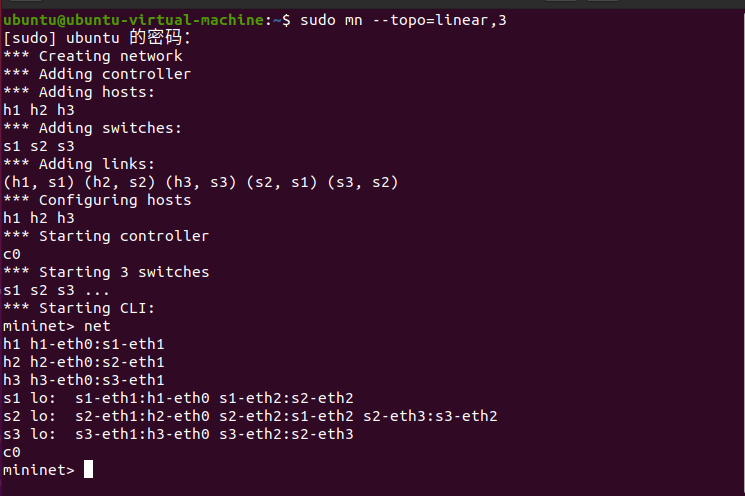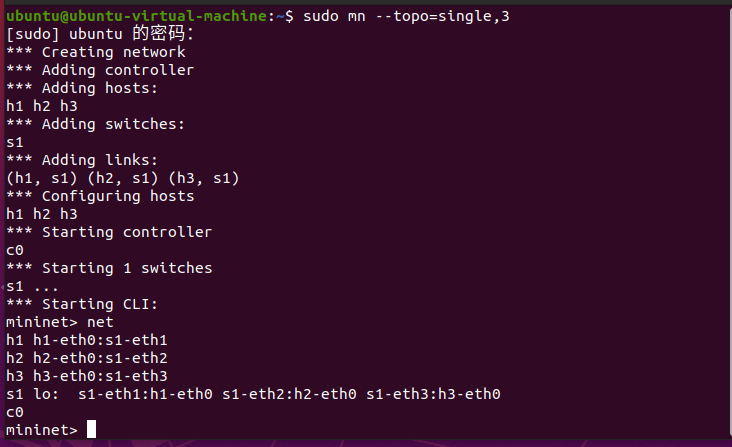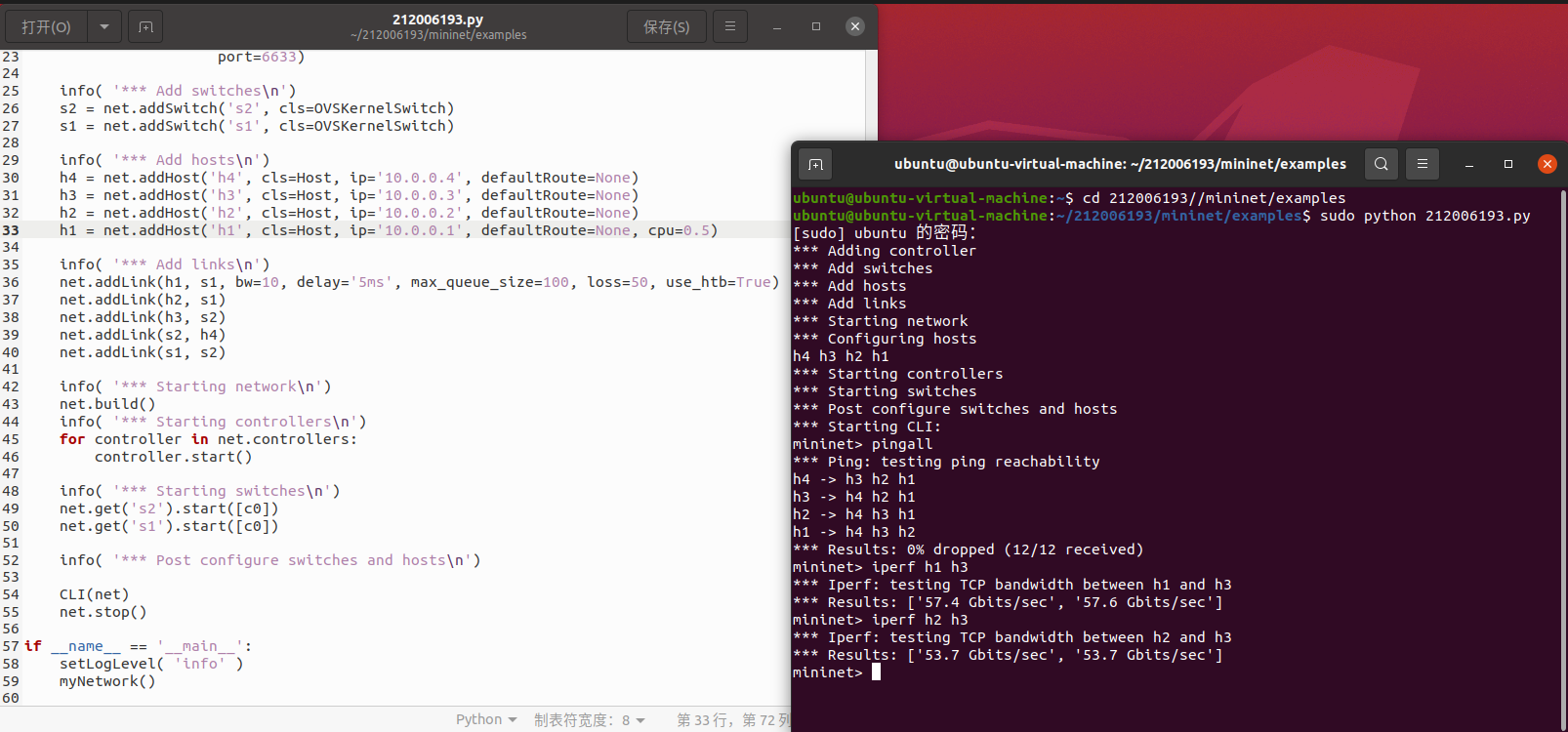实验一:SDN 拓扑实践
(一)基本要求
-
使用Mininet可视化工具,生成下图所示的拓扑,并保存拓扑文件名为学号.py。
![]()
-
使用Mininet的命令行生成如下拓扑:
a) 3台交换机,每个交换机连接1台主机,3台交换机连接成一条线。
![]()
b) 3台主机,每个主机都连接到同1台交换机上。
![]()
-
在2b)的基础上,在Mininet交互界面上新增1台主机并且连接到交换机上,再测试新拓扑的连通性。
![]()
-
编辑基本要求第1步保存的Python脚本,添加如下网络性能限制,生成拓扑:
a) h1的cpu最高不超过50%;
b) h1和s1之间的链路带宽为10,延迟为5ms,最大队列大小为1000,损耗率50。
![]()
(二)进阶要求
编写Python脚本,生成如下数据中心网络拓扑:

#!/usr/bin/python
#创建网络拓扑
"""Custom topology example
Adding the 'topos' dict with a key/value pair to generate our newly defined
topology enables one to pass in '--topo=mytopo' from the command line.
"""
from mininet.topo import Topo
from mininet.net import Mininet
from mininet.node import RemoteController,CPULimitedHost
from mininet.link import TCLink
from mininet.util import dumpNodeConnections
class MyTopo( Topo ):
"Simple topology example."
def __init__( self ):
"Create custom topo."
# Initialize topology
Topo.__init__( self )
L1 = 2
L2 = L1 * 2
L3 = L2 * 2
c = []
a = []
e = []
# add core ovs 1
for i in range( L1 ):
sw = self.addSwitch( 's{}'.format( i + 1 ) )
c.append( sw )
# add aggregation ovs 2
for i in range( L2 ):
sw = self.addSwitch( 's{}'.format( L1 + i + 1 ) )
a.append( sw )
# add edge ovs 3
for i in range( L3 ):
sw = self.addSwitch( 's{}'.format( L1 + L2 + i + 1 ) )
e.append( sw )
# add links between core and aggregation ovs 1 2
for i in range( L1 ):
sw1 = c[i]
for sw2 in a[i/2::L1/2]:
self.addLink( sw2, sw1 )
# add links between aggregation and edge ovs 2 3
for i in range( 0, L2, 2 ):
for sw1 in a[i:i+2]:
x = i
if(i > 1): x = i + 2
y = x + 4
for sw2 in e[x:y]:
self.addLink( sw2, sw1 )
#add hosts and its links with edge ovs 3 h
count = 1
for sw1 in e:
for i in range(2):
host = self.addHost( 'h{}'.format( count ) )
self.addLink( sw1, host )
count += 1
topos = { 'mytopo': ( lambda: MyTopo() ) }
(三)个人总结
-
任务1中,保存后的学号.py文件为只读
![]()
需要对其进行解锁,通过以下代码解决:
sudo chmod 777 文件名 -
任务3中,出现以下情况
![]()
需要自行为交换机添加新端口和为新主机设置IP
py s1.attach('s1-eth4')
py h4.setIp('10.0.0.4') -
本次实验,基础要求难度不大,对照着PDF能完成大部分,其中遇到的问题也能很快地定位并解决。
但是在进阶的方面,参考文档已经提供大部分代码,主要难度在于第二行和第三行的交换机连接,由于pyhton语法已经没剩多少印象,所以需要去学习相应的内容,花费非常多的时间。
通过这次实验我初步学习了mininet的基本的用法,例如使用Mininet的可视化工具生成拓扑以及使用Mininet的命令行生成特定拓扑等。同时也知晓了更多实用的指令,并提醒我要更加重视语言的学习。










 浙公网安备 33010602011771号
浙公网安备 33010602011771号